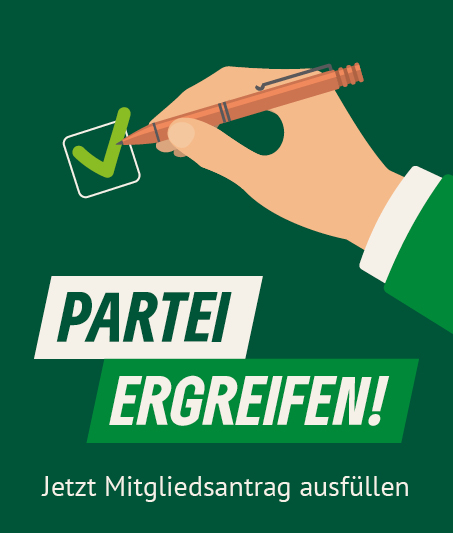
W3C - News
-
Authorized Translation of Verifiable Credentials Data Model v2.0 in Simplified Chinese
The World Wide Web Consortium (W3C) has published the Authorized Translation in Simplified Chinese of the Verifiable Credentials Data Model v2.0, 可验证凭证数据模型 v2.0. The Lead Translation Organization for this Authorized Translation was the National Computer Network Emergency Response Technical Team /Coordination Center of China.This translation was developed following the Policy for Authorized W3C Translations. The policy is designed to achieve quality translations through a process that relies on transparency and community accountability, with W3C providing oversight of the process.Translations enable broader adoption of W3C resources and serve worldwide audience across languages and cultures. Explore more W3C translations and learn how to contribute to translation efforts.
-
Updated Candidate Recommendation: Pointer Events Level 3
The Pointer Events Working Group invites implementations of an updated Candidate Recommendation Snapshot of Pointer Events Level 3. The features in this specification extend or modify those found in Pointer Events, a W3C Recommendation that describes events and related interfaces for handling hardware-agnostic pointer input from devices including a mouse, pen, or touchscreen. For compatibility with existing mouse-based content, this specification also describes a mapping to fire Mouse Events for other pointer device types.This specification is an update to [PointerEvents2]. This revision includes new features:altitudeAngleazimuthAnglepointerrawupdate event, for high frequency eventsaccess associated coalesced events , for a more precise handling of pointer movement dataaccess built-in predicted events , to reduce perceived latencyThis revision also includes clarifications:strategies and approaches in how a user agent assign a pointerIdsuppressing a pointer event streamboundary events caused by layout changesrelation with click , auxclick , and contextmenu eventsconsiderations to avoid fingerprinting with factory calibration informationComments are welcome via the GitHub issues by 4 December 2025.
-
Group Note Draft: Self-Review Questionnaire: Societal Impact
The Technical Architecture Group has published the first draft of a Group Note titled Self-Review Questionnaire: Societal Impact. The web should be a platform that helps people and provides a net positive social benefit. As we continue to evolve the web platform, we must consider the consequences of our work. This document sets out questions for specification authors, reviewers, and implementors of new web platform technologies to answer as part of a critical assessment of the impact of their work.
-
First Public Working Draft: Web of Things (WoT) Thing Description 2.0
The Web of Things Working Group has published the First Public Working Draft of the Web of Things (WoT) Thing Description 2.0. This document describes a formal information model and a common representation for a Web of Things (WoT) Thing Description (TD), Version 2.0. A Thing Description describes the metadata and interfaces of Things, where a Thing is an abstraction of a physical or virtual entity that provides interactions to and participates in the Web of Things. Thing Descriptions provide a set of interactions based on a small vocabulary that makes it possible both to integrate diverse devices and to allow diverse applications to interoperate. Thing Descriptions, by default, are encoded in a JSON format that also allows JSON-LD processing. The latter provides a powerful foundation to represent knowledge about Things in a machine-understandable way. A Thing Description instance can be hosted by the Thing itself or hosted externally when a Thing has resource restrictions (e.g., limited memory space) or when a Web of Things-compatible legacy device is retrofitted with a Thing Description. Furthermore, this document introduces the Thing Model, which allows authors to describe only the model or class of an Internet of Things (IoT) entity. Thing Models can be seen as a template for Thing Description instances, but with reduced constraints such as no or few requirements for specific communication metadata. This specification continues the work of WoT Thing Description 1.1 with no guarantees on backwards compatibility. In case of no backwards compatibility, there will be concrete guidelines for implementers to migrate to the new version. In other updates, the Working Group has retired the Group Note for the WoT Binding Templates and replaced it with the WoT Binding Registry. Additionally, the Working Group has published an updated Working Draft for the WoT Profiles.
-
First Public Working Drafts: Confidence Method v1.0 and Verifiable Credential Rendering Methods v1.0
The Verifiable Credentials Working Group has published the following two First Public Working Drafts:Confidence Method v1.0: This specification defines a mechanism that can be used with the Verifiable Credentials Data Model v2.0 to increase a verifier's confidence about a particular subject identified in a verifiable credential.Verifiable Credential Rendering Methods v1.0: This specification describes mechanisms that can be used to represent a Verifiable Credential through a visual, auditory, or haptic medium. It covers rendering a Verifiable Credential to a physical document, digital image, screen reader, or braille output.
-
Upcoming: W3C Workshop on Smart Voice Agents
W3C announced today a Workshop on Smart Voice Agents, to be held virtually on Zoom from 25 to 27 February 2026.The goals of this workshop are: To identify stakeholders of Voice Agents standardization to drive the development of Web standards aligned with the real needs of Voice AgentsTo identify and discuss the pain points, technological gaps, and clarify potential impacts on Web standardsAnd the possible topic areas for the workshop may include:Clarification of use-cases for smart voice agents and their requirements (including voice interaction with smart devices, browsers, the Web of Things)User & developer needs: accessibility/usability, internationalization, input-to-output coordination, modality integration (voice, typing, handwriting)Horizontal platform considerations: resource discovery, trust/privacy/security, business models, and implications for Web standardsIf you agree to work on the goals above and have experience and/or expertise in the topic areas above, please apply to the workshop.This workshop will be a fully virtual event with pre-recorded talks, online discussions, and interactive sessions. With the consent of the speakers, recordings and slides of the talks will be made available after the workshop.Attendance is free for all invited participants and is open to the public, whether or not W3C members.Please submit your proposal using the "Submit a talk proposal form" before 27 November 2025. We will work with you in confirming and defining your proposed contribution. You may also contact the Program Committee by email directly at any time if you have any questions.
-
Last Call for Review of Proposed Corrections and Additions to Geolocation
The Devices and Sensors Working Group and the Web Applications Working Group have proposed corrections and additions to the W3C Recommendation of Geolocation. Geolocation provides access to geographical location information associated with the hosting device.Proposed corrections and additions are marked in the document. Comments, including implementation experience, are welcome via GitHub through 28 December 2025.
-
First Public Working Draft: CSS Anchor Positioning Module Level 2
The CSS Working Group has published a First Public Working Draft of CSS Anchor Positioning Module Level 2. This specification defines anchor positioning, where a positioned element can size and position itself relative to one or more anchor elements elsewhere on the page.This is a delta specification, meaning that it currently contains only the differences from CSS Anchor Positioning Level 1.
-
Web Content Accessibility Guidelines (WCAG) 2.2 Approved as ISO/IEC International Standard
Web Content Accessibility Guidelines (WCAG) 2.2 is now an approved International Organization for Standardization (ISO) standard: ISO/IEC 40500:2025. It is available free from ISO/IEC 40500:2025 - Information technology — W3C Web Content Accessibility Guidelines (WCAG) 2.2. The formal recognition enables more countries to formally adopt the standard. Additional information is in the W3C press release and 'ISO/IEC 40500, EAA, EN 301 549' section of WCAG 2 Overview.
-
Web Sustainability Guidelines (WSG) becomes a first public Draft Note
The Sustainable Web Interest Group published today a first public Draft Note of Web Sustainability Guidelines (WSG).The digital industry is responsible for 2-5% of global emissions, more than the aviation industry. The Web Sustainability Guidelines (WSG) cover a wide range of recommendations to make web products and services more sustainable.These guidelines use planetary, people, and prosperity principles (the PPP approach) throughout the decision-making process, allowing users to minimize their environmental impact in various ways. These include user-centered design, performant web development, carbon-free infrastructure, sustainable business strategy, and, supported by measurability data, various combinations thereof.The guidelines are in line with the Sustainable Web Manifesto and aligned with GRI Standards to help organizations incorporate digital products and services into broader sustainability reporting initiatives. The structure of WSG is inspired by WCAG with 92 guidelines and 254 success criteria. Every guideline is supported by evidence, and additional information sections provide examples, specific benefits, and compliance reporting metrics (based upon GRI). Further testability guidance and techniques for criteria can be found within W3C Editor's Draft Sustainable Tooling and Reporting (STAR).Since the formal chartering of the W3C Interest Group in October 2024 and after the community group report became an editor's draft, significant progress was made including:Editorial improvements for clarity and readability were applied across all areas of work including the addition of new content where applicable to provide greater sustainability coverage.The introduction was edited, and contains new material on supplements and relationships to other specifications.A new “considerations” section of the document identifies accessibility, security and privacy tangent issues that interlink with sustainability topics.Breaking down of the specification into a paginated view to improve readability, with a full document mode available for those who prefer - including the ability to filter guidelines and success criteria by areas of interest, allowing for granular content control.Addition of a separate resources supplement, categorized by success criteria, cross-referenced within the specification, that provides over 2,500 regularly maintained sustainability related citations, tools, resources, and materials to help with implementation and adoption.This W3C Group Draft Note will be further developed to ensure it meets the needs of its expected audience, and the group will continue to work on improving the usefulness of the specification. Notably, the inclusion of an Impact API is under development by the Interest Group’s Measurability Task Force. It aims to provide measurement-based scoring to identify more easily where the priority of effort should begin, but also to provide a sensible approach to deciding conformity levels within the scope of the specification.
Aktuelle Termine
GRUENE.DE News
Neues
-
Schulterschluss mit Rechtsextremen: Konservative schwächen Umweltschutz und Menschenrechte
Die Europäische Volkspartei-Fraktion (EVP) hat ihren Kompass verloren. Unter dem Vorsitzenden Manfred Weber (CSU) haben sie im EU-Parlament mit [...]
-
Das Internet befreien und Freiheit im Internet garantieren.
Ein Beitrag von Dr. Franziska Brantner, Bundesvorsitzende von BÜNDNIS 90/DIE GRÜNEN, Alexandra Geese, MdEP und stellv. Sprecherin der [...]
-
COP30: Merz riskiert Deutschlands Glaubwürdigkeit.
Nächste Woche startet die große UN-Klimakonferenz in Belém in Brasilien. Beim „Leaders Summit“ der brasilianischen Regierung vor der [...]
